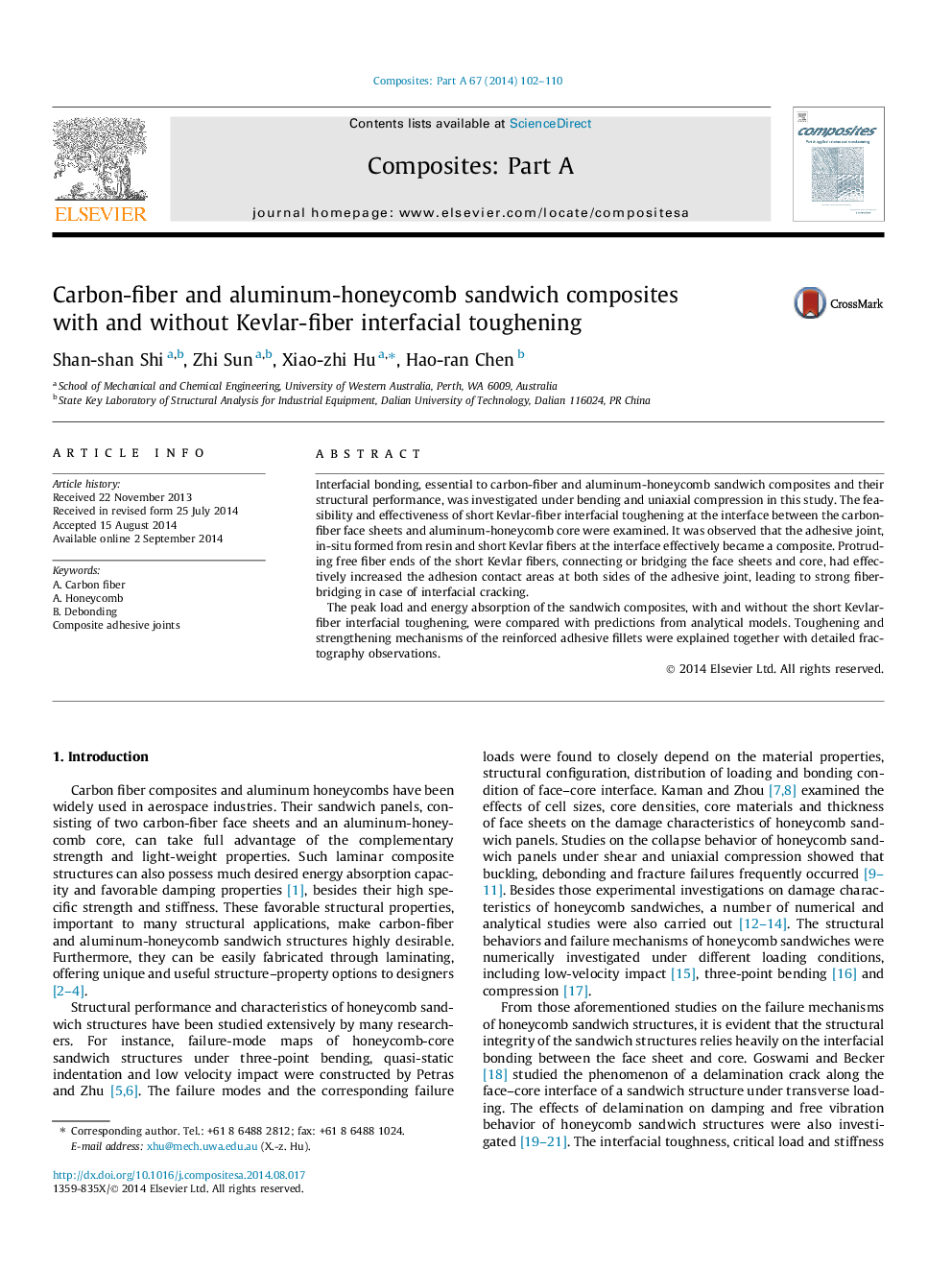| Article ID | Journal | Published Year | Pages | File Type |
|---|---|---|---|---|
| 1466016 | Composites Part A: Applied Science and Manufacturing | 2014 | 9 Pages |
Interfacial bonding, essential to carbon-fiber and aluminum-honeycomb sandwich composites and their structural performance, was investigated under bending and uniaxial compression in this study. The feasibility and effectiveness of short Kevlar-fiber interfacial toughening at the interface between the carbon-fiber face sheets and aluminum-honeycomb core were examined. It was observed that the adhesive joint, in-situ formed from resin and short Kevlar fibers at the interface effectively became a composite. Protruding free fiber ends of the short Kevlar fibers, connecting or bridging the face sheets and core, had effectively increased the adhesion contact areas at both sides of the adhesive joint, leading to strong fiber-bridging in case of interfacial cracking.The peak load and energy absorption of the sandwich composites, with and without the short Kevlar-fiber interfacial toughening, were compared with predictions from analytical models. Toughening and strengthening mechanisms of the reinforced adhesive fillets were explained together with detailed fractography observations.
